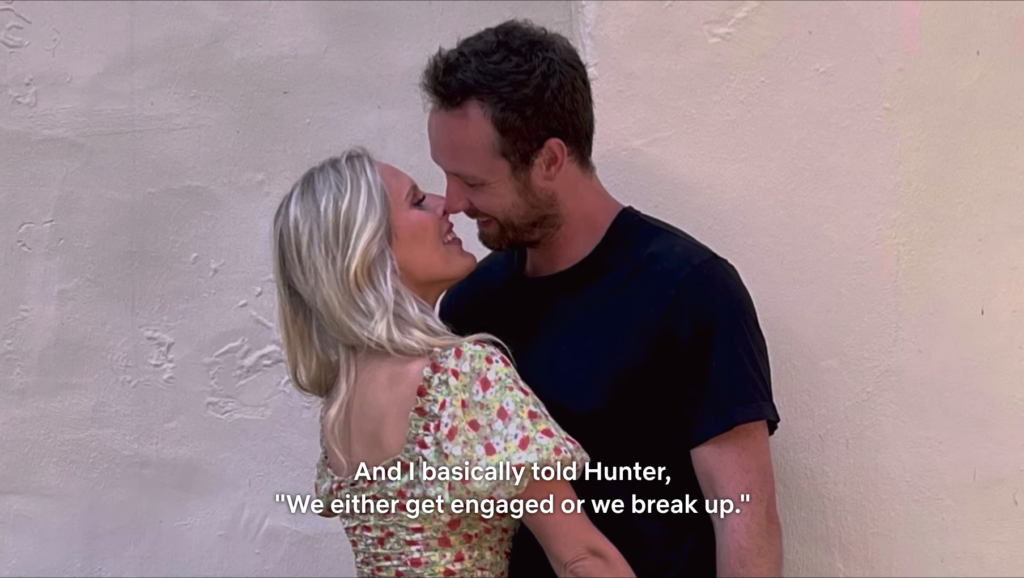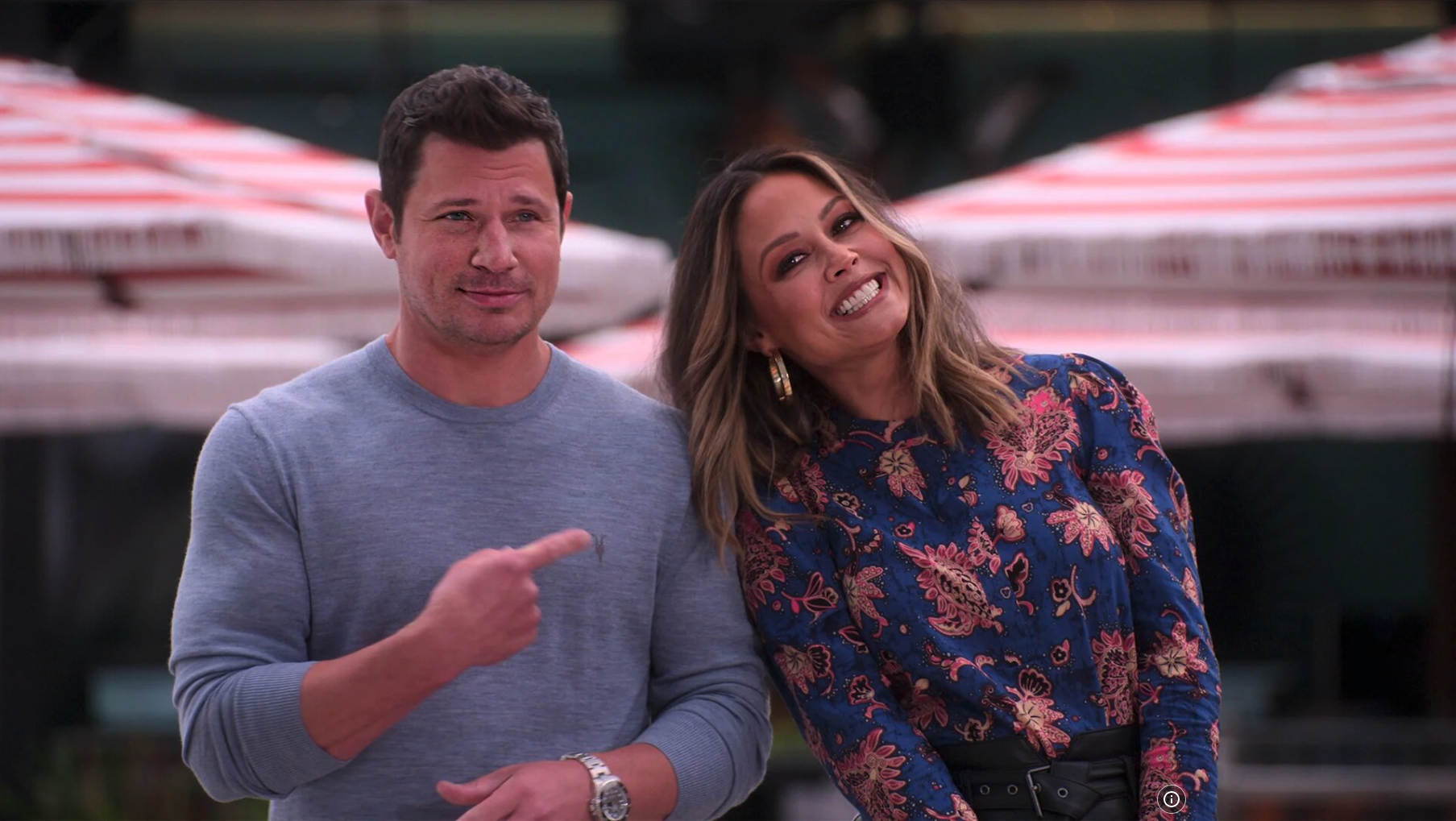Nick and Vanessa Lachey’s new reality show on Netflix about getting married (or not) leaves more to be desired
On April 6, renowned celebrities cum social scientists Nick and Vanessa Lachey premiered their new Netflix reality show, The Ultimatum: Marry or Move On.
Fans of their other series, Love is Blind, heard about this from the second season’s reunion episode. In Love is Blind, we explored the question of whether two people who forged a romantic connection without ever laying eyes on each other could then speed through a vacation and a stint of living together to saying “I do” at the altar.
In The Ultimatum, we explored whether two people already in a committed relationship could be motivated by an ultimatum to take the relationship to the next level. Anyone who’s read an advice column or subreddit (such as r/relationship_advice) knows that issuing an ultimatum isn’t usually a good idea. But apparently, it worked for the Lacheys, so they wanted to see if it could work for others willing to televise their dirty laundry.
The Ultimatum Cast
Here’s how the show worked. There were six couples based in Austin, Texas:
- Jake (age 26) and April* (23)
- Colby* (25) and Madlyn (24)
- Zay (25) and Rae* (24)
- Randall (26) and Shanique* (24)
- Hunter (28) and Alexis* (25)
- Nate* (30) and Lauren (29)
Each couple had been together for roughly two years. Each had one person—the one with the asterisk (*) next to their name in the above list—demanding that they either get engaged ASAP or just stop wasting each other’s time.

- For the first week, the twelve cast members got to date among each other and see if they clicked with anyone else.
- Then there was a choosing ceremony where, one at a time, a participant selected someone they were interested in living with for a three-week “trial marriage.”
- After that, the original six couples got back together for another three-week period of living together.
The goal was to see if “the experience,” as it was often called throughout the show, changed anything in these people’s minds. Would they reflect and learn from their wants, needs, and potential areas of self-improvement? Or would they double down on their original stance, whether they were for or against getting married? At the end, they had to decide whether to move forward with a proposal or break up with each other.
According to Today, Netflix has already green-lit a second season, and it is going to feature an all-queer cast. This could be very interesting indeed if it makes most or all of the participants fair game for “trialing” each other. However, if the show doesn’t make certain other improvements that I’m suggesting below, the novelty of this singular casting choice could wear off quickly.
1. Give us all the spicy moments
With only nine episodes covering the seven-week duration of the experience, it felt as though we in the audience missed out on a lot of events and interactions.
Let’s be honest: We were mostly interested in the second phase, the trial marriages with other people. We were dying to see if anyone would use the experience as a free pass to stray outside their relationship, fall in love with someone else, or even become willing to get engaged with someone else.
Surely there was enough content from those three weeks to fill just one more episode. For example, in episode 4, Zay and Colby got into an argument about a night when they went clubbing together.
I didn’t even realize those two were pals like that. What was that night like? Did any of the other cast members hang out as friends? Aside from that one dinner and Alexis’ bachelorette party, did other girls’ or guys’ nights out transpire? If not, there should be next time.
I would have also liked to see each participant introduce their trial partner to family or friends. Only half of them did it in season one. Zay shared a meal with Shanique’s family, Jake raced cars with Rae’s father, Jake’s mother told him that Rae wasn’t nearly as good for him as April, and Madlyn’s friends fawned over Randall.
What about the other half? I would have loved to see Randall introduce Madlyn to the people in his life and elicit incredulous reactions (in what world does she play in remotely the same league as the vibrant, stunning Shanique?). Zay should have shown Shanique his notorious party scene. And even though they weren’t interested in each other that way, April and Colby should have done this anyway, just to hear what kinds of comparisons might get made with their original partners.
Oh yeah, and somehow April and Colby wound up as BFFs by the end of their trial marriage? How did that happen? Aside from Colby taking care of April while she was sick, we never saw them do anything together, not even grab a drink or brunch. If they were each doing their own thing—which we knew was definitely the case for Colby—we still should have been privy to glimpses of it.
By comparison, each season of Love is Blind had ten episodes covering a slightly shorter time frame.
2. Give us couples who have been together longer
Two-year relationships are too short for a show like this. Half of these couples hadn’t even moved in together yet. It was hard to care much about these outcomes when communication was so bad all around, and every interaction dredged up memories of your worst college or high school dates.
When I was in my early to mid-twenties, it felt as though all the long-term relationships around me were crashing down. Someone in a lukewarm four-year relationship eventually decided that “nothing is really wrong” wasn’t a good enough reason to keep it going. A pair of high school sweethearts who had been together for eight years realized they’d grown apart. A ten-year relationship collapsed, and then an eleven-year one.
That’s the kind of situation The Ultimatum viewers can feel invested in. Give us couples who have held each other’s hands through prom, graduations, moves, and maybe periods of long-distance dating. Ones where someone sacrificed a dream to pack up and follow their other half somewhere for college or work. Ones who would need to rediscover themselves if their partners aren’t willing to move forward with their relationships because this is all they’ve known throughout their formative years.
3. Give us older couples
In a similar vein, the idea of starting over at age 23 evoked such a minute emotional response, that it was almost boring. Don’t get me wrong; I liked April for her confidence and sympathized with her fertility issues. I just couldn’t believe that a show about the urgency of marriage featured only one couple with a 29- and a 30-year-old.
Every participant should be 29 or older. We want people whose life plans entailed getting married by their mid or late twenties. Those who face the prospect of a geriatric pregnancy by the time they get all their ducks in a row. Those who worry that they’ll be too old to play sports with their future kids. Those who have been experiencing mounting pressure from their families year over year to get married and produce grandchildren already.
These are the situations where ultimatums almost feel like life or death—and that’s good drama.
Final Thoughts
The first season of The Ultimatum: Marry or Move On definitely served up some juicy moments involving heated arguments, jealousy, confusing new feelings, even surprise proposals—all important stuff for reality TV. Yet overall, it induced more eye-rolls than dropped jaws. Everyone seemed too immature, most of the conflicts too trifling and drawn-out. Season two can do better.

